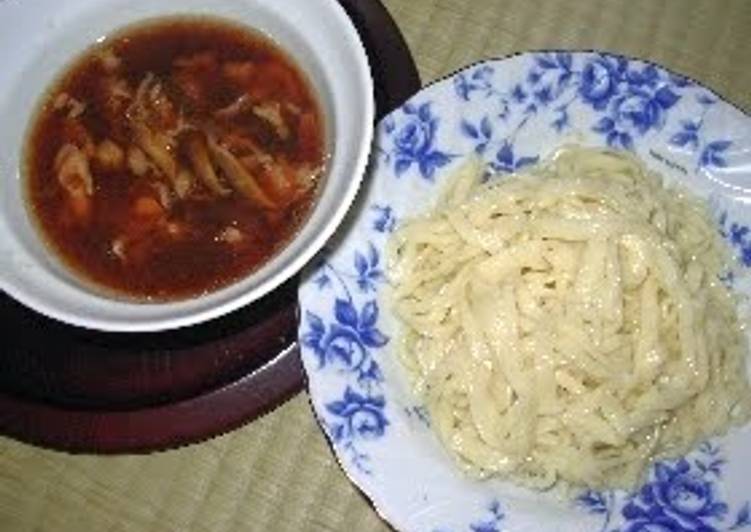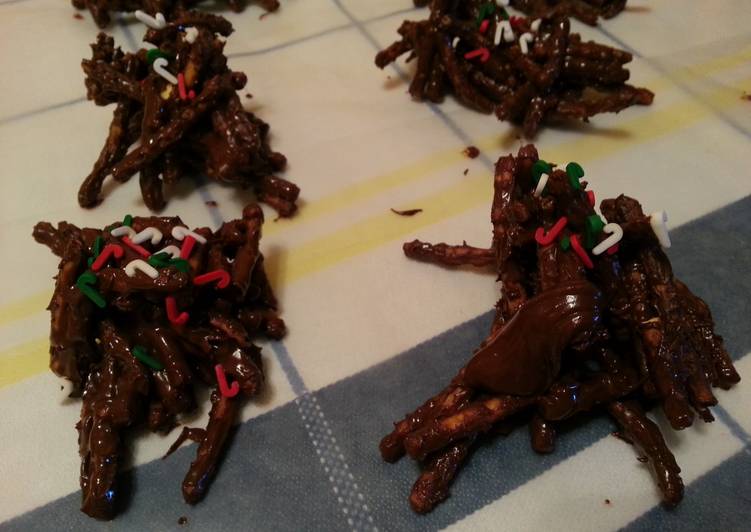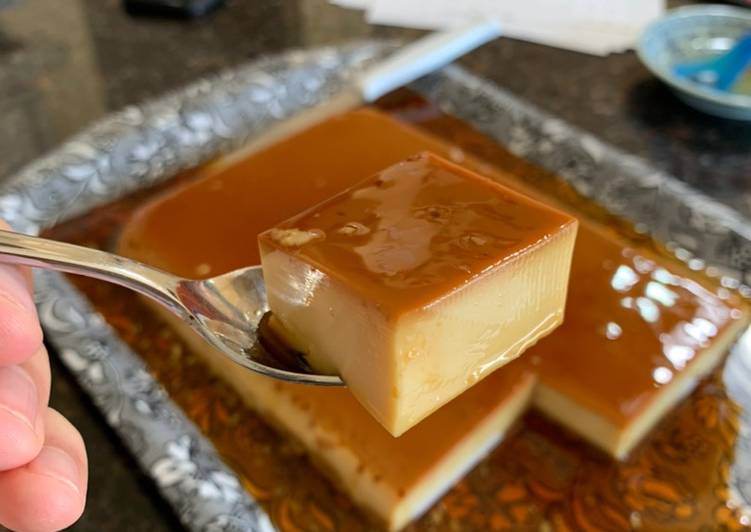
Hello everybody, hope you are having an amazing day today. Today, I’m gonna show you how to make a distinctive dish, my grandmother's diy udon noodles. One of my favorites. For mine, I will make it a little bit unique. This is gonna smell and look delicious.
Iron Chef Morimoto teaches us how to make authentic, udon noodles recipe from scratch. Delicious homemade noodles that are far more superior than store-bought. Making delicious udon noodles at home requires just water, salt, and flour, and nothing beats the flavor and texture of fresh homemade udon. Here I am going to teach you how to make Japanese Udon noodle.
My Grandmother's DIY Udon Noodles is one of the most popular of current trending foods on earth. It’s simple, it’s fast, it tastes yummy. It’s appreciated by millions daily. They are fine and they look wonderful. My Grandmother's DIY Udon Noodles is something which I’ve loved my entire life.
To begin with this particular recipe, we must first prepare a few ingredients. You can cook my grandmother's diy udon noodles using 4 ingredients and 22 steps. Here is how you can achieve it.
The ingredients needed to make My Grandmother's DIY Udon Noodles:
- Take 200 grams White flour
- Get 2 tsp Salt
- Get 75 ml Water
- Get 1 Flour for dusting (flour or katakuriko)
If you like bacon and noodles, then you'll love this. You can't even taste the cabbage. Stir in egg noodles and return to a boil. Making handmade udon noodles, thick chewy Japanese noodles made from wheat flour, water, and salt, is easier than it looks!
Instructions to make My Grandmother's DIY Udon Noodles:
- Combine the flour and salt in a bowl. Add half the quantity of water.
- Mix the flour that has been saturated with water in the center of the bowl. Gradually add water and mix into the center so that the mixture takes on the appearance of panko.
- Squeeze and knead the fine crumbs together to form a lump. Add water if necessary, but not too much.
- It will eventually form into a cohesive ball.
- Put in a plastic bag and knead with your feet. This adds elasticity and gives a chewy texture to the noodles! It is possible to mix with your hands, if you put enough strength into it.
- The dough will spread out as you knead, so bring the dough together from time to time and knead for 10 minutes (as seen in the photo, I kneaded the dough by folding it in, and peeled off the plastic each time).
- Roll the dough into a ball. Wrap in plastic wrap or leave it in the bag, and let rest for over an hour (leave it as is).
- Since it's already in the bag, flatten the dough with your hands and spread it out slightly.
- Leave the dough in the plastic bag and roll out with a rolling pin, Wrinkle marks from the plastic may transfer to the dough, so peel it off occasionally (I rolled out the dough to the size of the bag).
- Remove from the bag. Dust your work surface, the rolling pin, and the udon dough with flour using your hands and rub in (I used wheat flour this time). As my cutting board is small, I spread out the plastic bag and lay it on top of it.
- Roll out the dough on your work space. Dust your workspace, rolling pin, and the dough with flour well so that they don't stick. Wrap the dough around the rolling pin, flip it over, and spread the dough out evenly to the four corners (it's easy to turn the dough over if you roll it around a rolling pin).
- I rolled out the dough to the size of the bag. My cutting board and rolling pin are small, but I was able to roll it out into a long oval.
- When the dough is rolled out to your preferred thickness, fold into three or four, and slice from the edge with a knife (I folded into three).
- Sprinkle flour on the cut strips and loosen them apart (the cut edges are prone to sticking, so be careful).
- All the noodles have been cut. While cutting, I started making them a bit fatter so the thickness of the noodles varies somewhat. When they're boiled you'll notice the difference, so please try to keep them to a uniform thickness.
- In a pot, bring plenty of water to the boil.
- Drop the loosened strands into the boiling water. Keep the pot boiling and stir occasionally so the strands don't stick (I only have a small pot, but it's best to use a large one).
- If the pot looks like it's about to boil over, add 50 ml of water. It'll prevent the pot from boiling over, but it'll also decrease the temperature of the water, so don't add too much! You could also lower the heat.
- Boil the noodles for 8-10 minutes, and once the strands float to the surface, bite into one to check the texture. If it has cooked through, they're done.
- You could drain the water and wash in cold water for chilled noodles, or serve the noodles in a hot broth. Serve whichever you prefer (I ate the noodles cold).
- I made the noodles for the first time in a while and cut the strands thickly, but they took forever to boil and were difficult to eat. They were delicious, but my jaws were exhausted from the chewing.
- My father gave me a kneading bowl, and so I made these this weekend. FYI, I made the noodles with 850 g of all-purpose flour. The bowl is pretty big.
Stir in egg noodles and return to a boil. Making handmade udon noodles, thick chewy Japanese noodles made from wheat flour, water, and salt, is easier than it looks! Plus a recipe for kake My favorite bowl of udon was nabeyaki udon—udon noodles in a flavorful broth made from dashi and chicken stock, and filled with lots of. Steps for making udon noodles at home from dough ingredients to mixing it, cutting it and then finally cooking it. Add the salted water in the bowl and mix with flour well by hands.
So that’s going to wrap this up for this exceptional food my grandmother's diy udon noodles recipe. Thank you very much for reading. I am confident that you will make this at home. There’s gonna be interesting food at home recipes coming up. Don’t forget to save this page in your browser, and share it to your loved ones, colleague and friends. Thanks again for reading. Go on get cooking!


